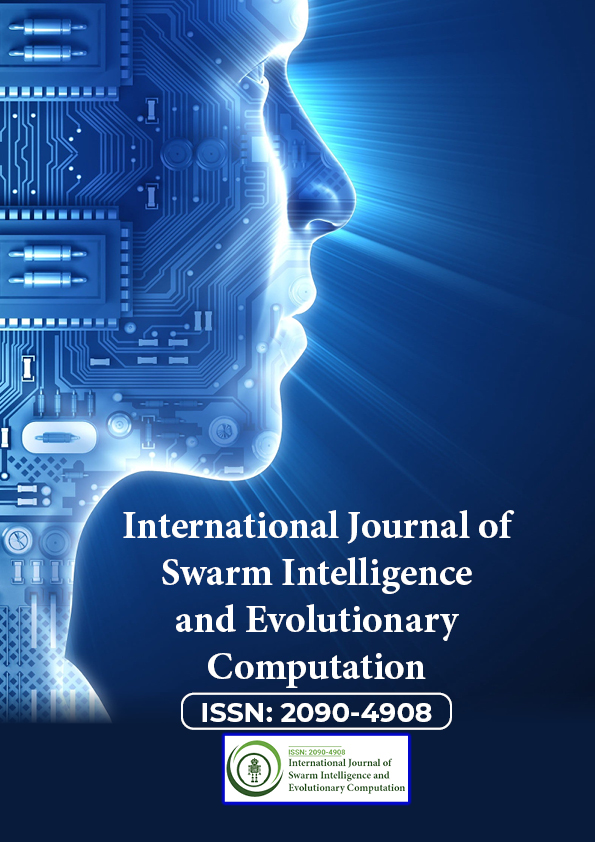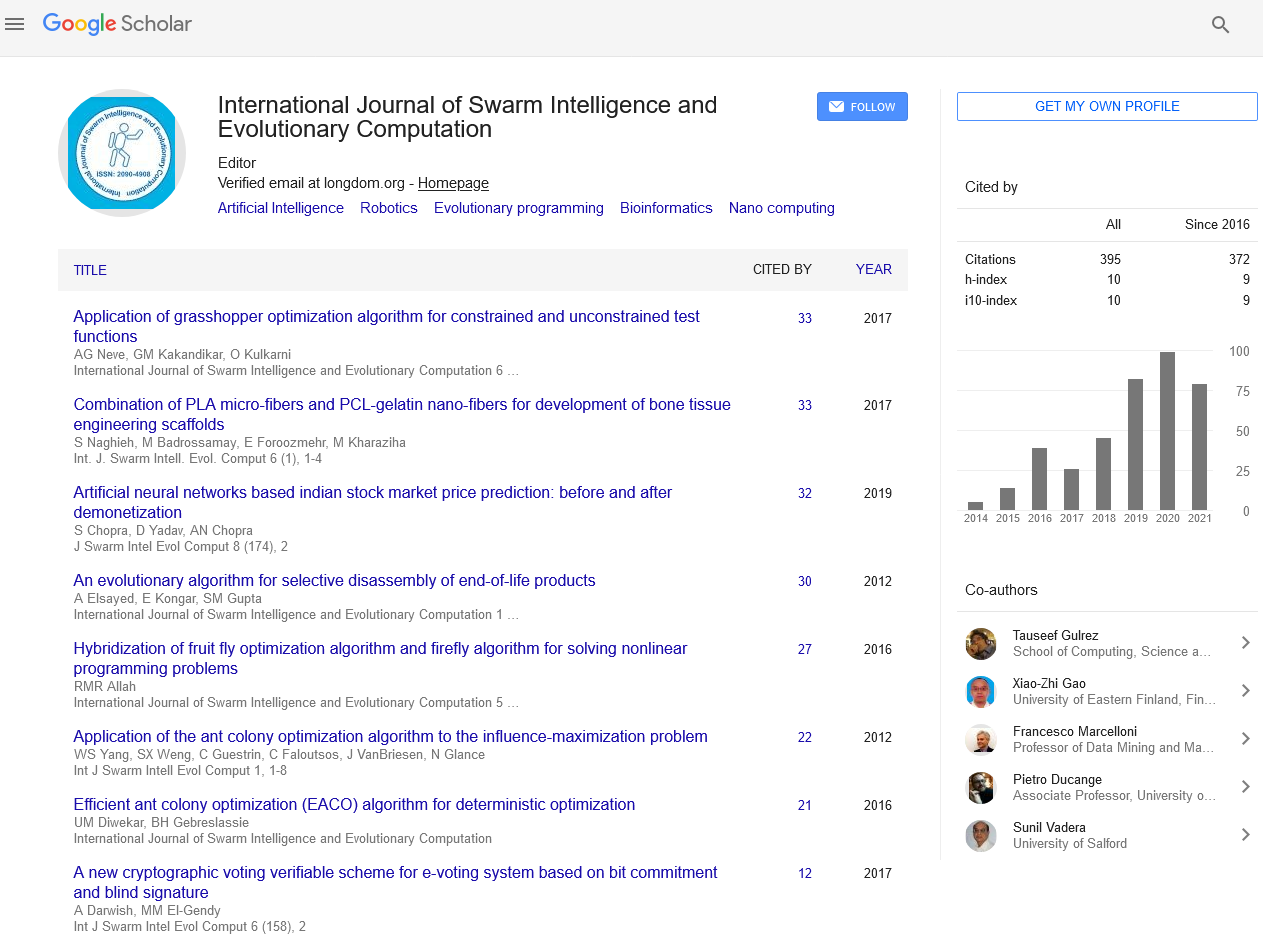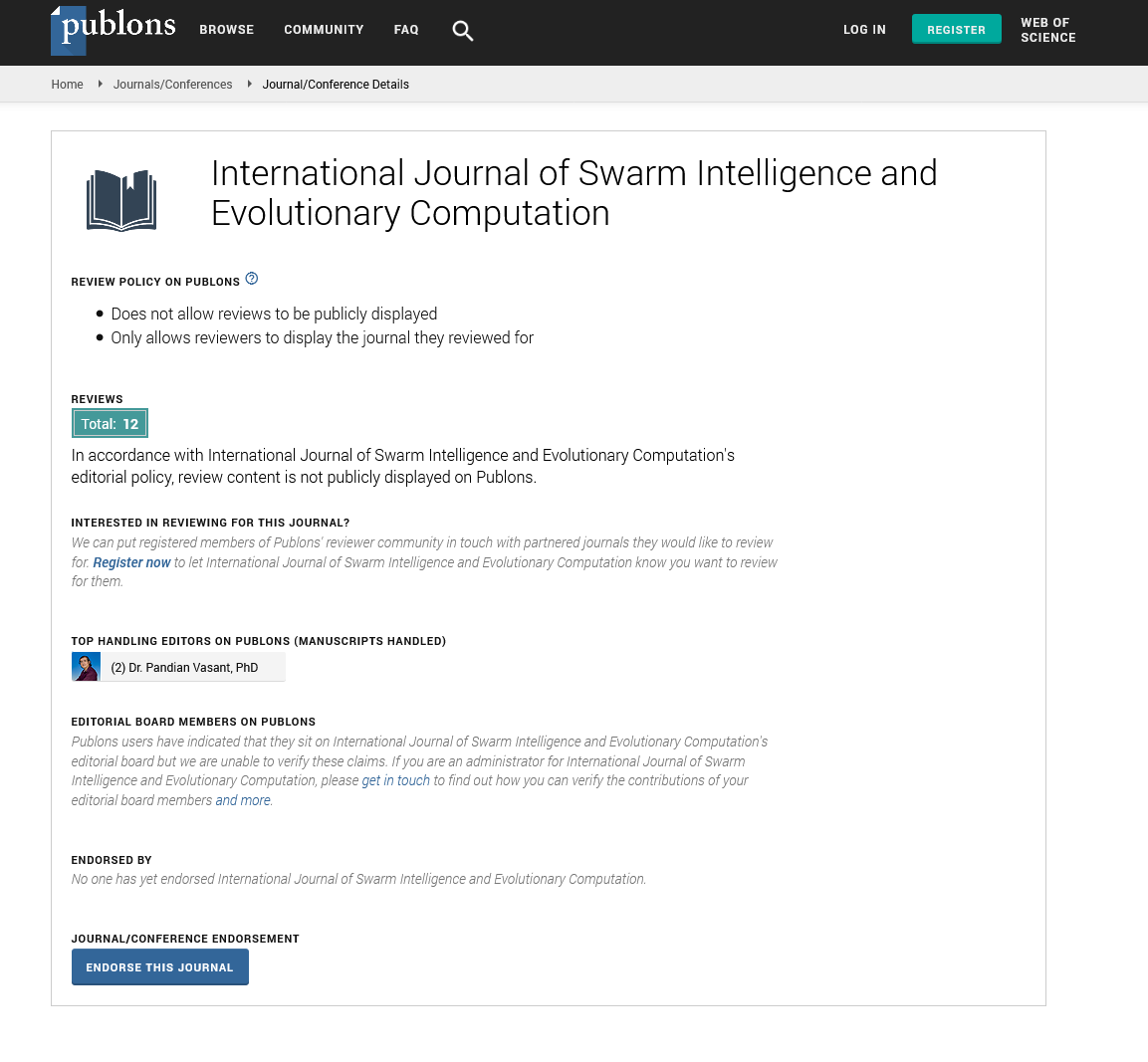Indexed In
- Genamics JournalSeek
- RefSeek
- Hamdard University
- EBSCO A-Z
- OCLC- WorldCat
- Publons
- Euro Pub
- Google Scholar
Useful Links
Share This Page
Journal Flyer

Open Access Journals
- Agri and Aquaculture
- Biochemistry
- Bioinformatics & Systems Biology
- Business & Management
- Chemistry
- Clinical Sciences
- Engineering
- Food & Nutrition
- General Science
- Genetics & Molecular Biology
- Immunology & Microbiology
- Medical Sciences
- Neuroscience & Psychology
- Nursing & Health Care
- Pharmaceutical Sciences
Opinion Article - (2022) Volume 11, Issue 12
Recent trends in Machine Methods of Soft Robotics
Michael Jamieson*Received: 21-Nov-2022, Manuscript No. SIEC-22-19440; Editor assigned: 23-Nov-2022, Pre QC No. SIEC-22-19440 (PQ); Reviewed: 07-Dec-2022, QC No. SIEC-22-19440; Revised: 16-Dec-2022, Manuscript No. SIEC-22-19440 (R); Published: 26-Dec-2022, DOI: DOI: 10.35248/2090-4908.22.11.288
Description
Soft robots are having modelling, calibration, and control issues when compared to rigid robots because the innate characteristics of soft materials can cause complex behaviors due to nonlinearity and hysteresis. Also due to their flexibility, deformability, and adaptability, soft robots have received a great deal of attention. Soft robots have applied various approaches based on machine learning existing and categorizes the implementation of machine learning approaches in different soft robotic applications, which include soft sensors, soft actuators, and applications such as soft wearable robots to overcome these limitations.
Many traditional robotics solutions to control problems requiring heavy modification and approximation to work for soft systems rely on rigid-body dynamics methods. The difficulty of representing the high-dimensional soft system dynamics, among other things, means that the gap between the performance of these methods in theory and in practice is usually quite large. High-fidelity soft system models have been used successfully in soft system control, but this requires accurate system identification and expensive run-time computation, limiting the potential applications. This high dimensionality also poses a fundamental challenge for soft sensing because many physical states can produce the same sensor reading as the higher dimensional data is transduced.
Functions of soft sensor
Furthermore, these sensors are prone to greater variation in manufacturing outcomes and shapes, as well as significant degrees of hysteresis, non-stationary, and other mechanical nonlinearities that may be negligible in their rigid counterparts. Approaches to these sensing, actuation, and control problems based on data-driven machine learning have produced promising results in recent years, providing a parallel path to the on-going analytical modelling work. Machine learning methods entail the empirical approximation of a previously unknown model of a system, such as sensor transduction behavior or robot manipulator dynamics. Although neural networks are commonly used for function approximation in this process, the term can also be applied to many optimization strategies and other datadriven approaches.
Define soft sensors as devices that convert a physical phenomenon, such as force, into a signal that encodes that information and that use deformable materials in either the sensing method or the mechanical structure in which the sensing element is embedded. Machine learning is used in signal decoding to reconstruct an understandable representation of the original phenomenon.
Conclusion
Soft robotic systems are those in which the physical structure and/or actuators of the robot itself are significantly soft. Welltrained learning models using sensor datasets with consistent signal patterns and ranges can produce good learning results. However, because soft sensors have manufacturing tolerances for a variety of reasons, including variations in elastomer properties and manufacturing human errors, even homogeneous sensors have characteristics that vary, resulting in performance variations, such as different initial offset and operating ranges.
Furthermore, test conditions such as indenter size and clamping type can cause a sensor to behave differently; output data can be susceptible to change even if input data remains constant. In this case, even if a model achieves excellent learning results using datasets from a single sensor, it cannot be applied to other sensors. Furthermore, because soft-material sensors are not longlasting, drift in sensor response can occur as the sensor structure is permanently deformed. Machine learning methods entail the empirical approximation of a previously unknown model of a system, such as sensor transduction behavior or robot manipulator dynamics. Although neural networks are commonly used for function approximation in this process, the term can also be applied to many optimization strategies and other datadriven approaches. In terms of its application in robotic system engineering, a critical axis to consider is the extent to which final system performance is dominated by training data versus an a priori model.
Citation: Jamieson M (2022) Recent trends in Machine Methods of Soft Robotics. Int J Swarm Evol Comput. 11:288.
Copyright: © 2022 Jamieson M. This is an open-access article distributed under the terms of the Creative Commons Attribution License, which permits unrestricted use, distribution, and reproduction in any medium, provided the original author and source are credited.


